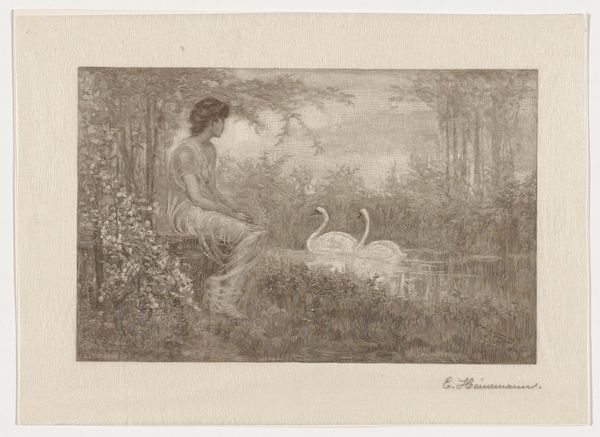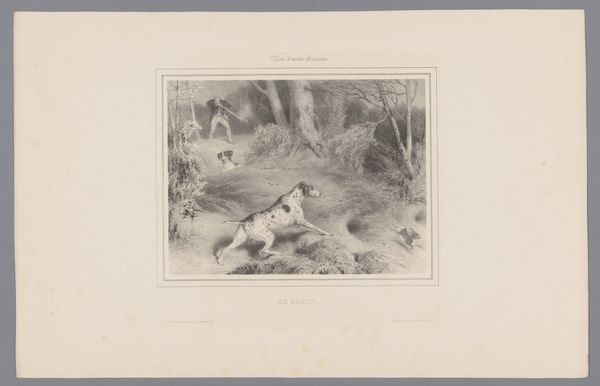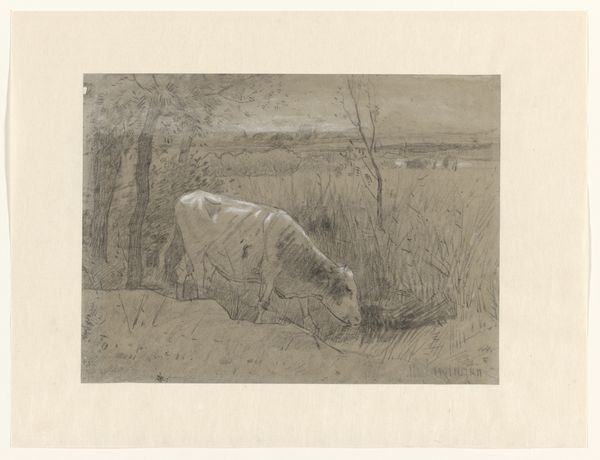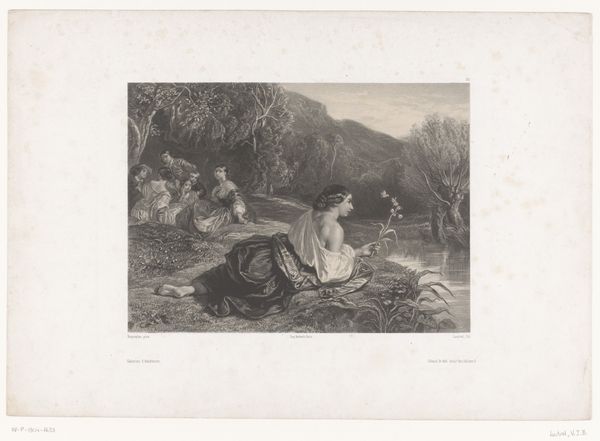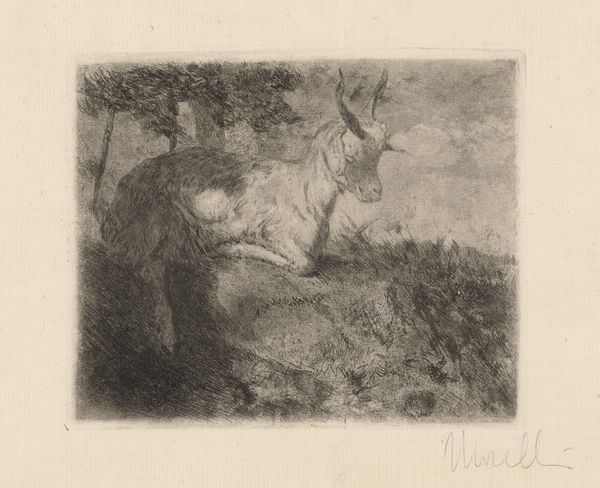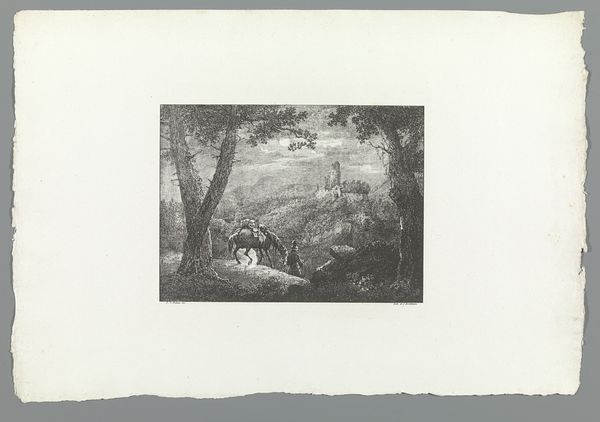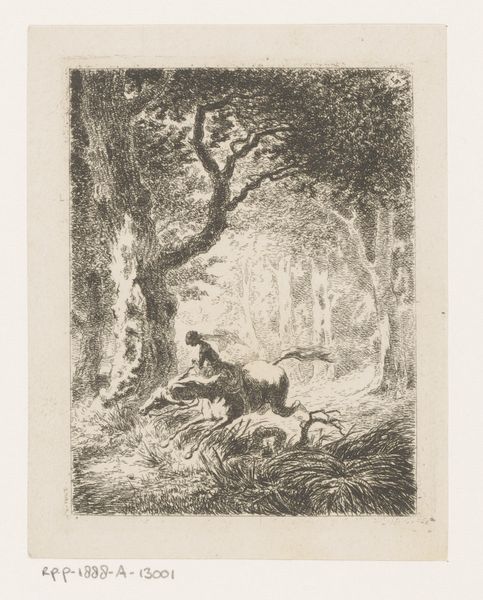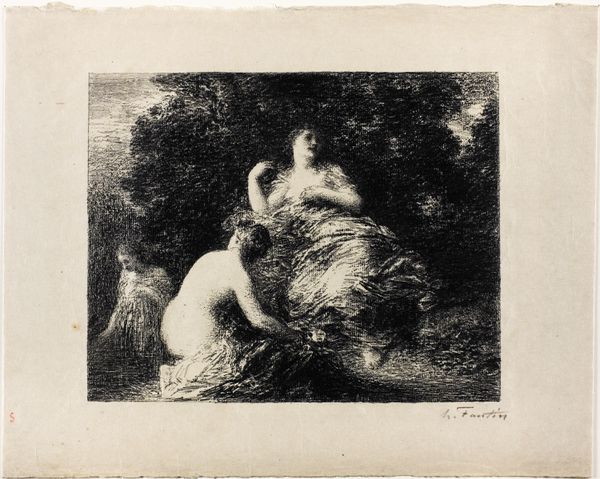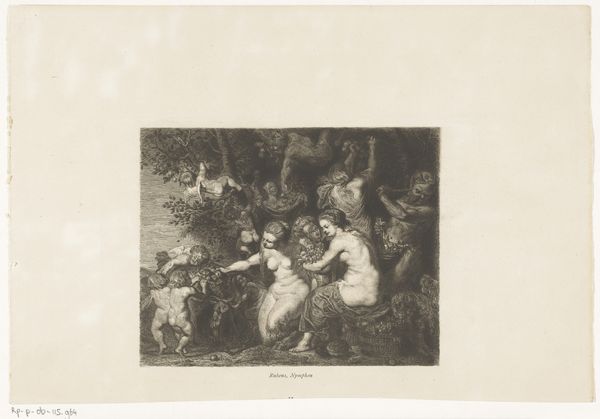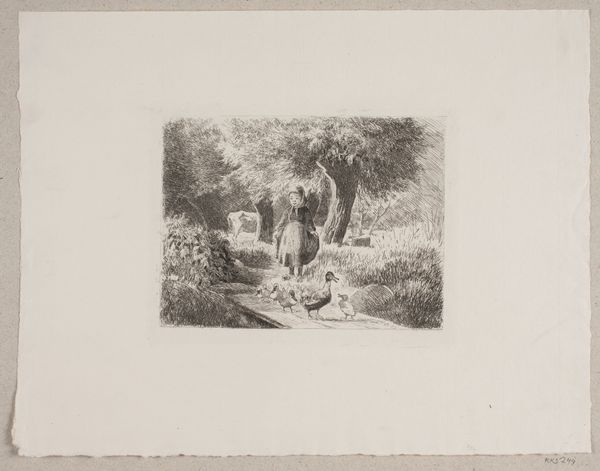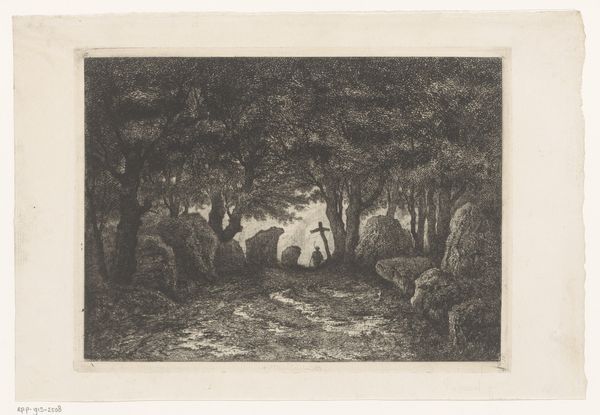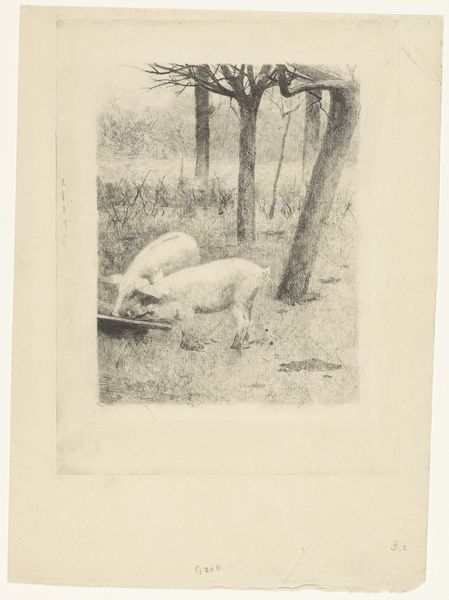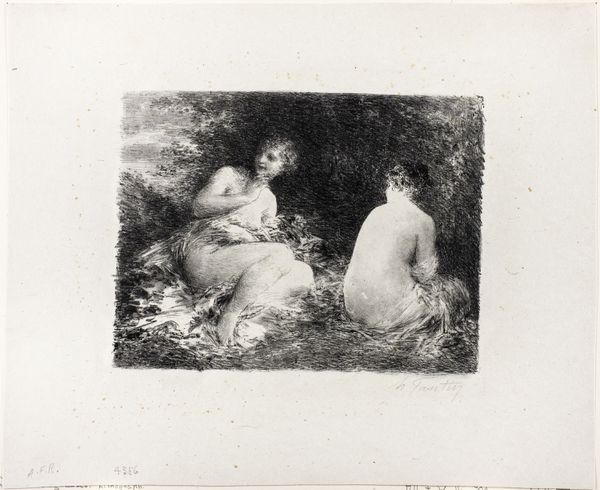
print, etching, woodcut, wood-engraving
# print
#
etching
#
landscape
#
figuration
#
woodcut
#
united-states
#
symbolism
#
wood-engraving
#
monochrome
Dimensions: 5 1/16 x 7 15/16 in. (12.86 x 20.16 cm) (image)9 3/16 x 11 7/16 in. (23.34 x 29.05 cm) (sheet)
Copyright: Public Domain
Curator: Looking at this ethereal scene, I’m struck by its hushed, contemplative mood. Editor: Absolutely. The delicate hatching in this monochrome print really lends itself to a dreamlike quality, doesn't it? This is “A Spring Idyll,” created in 1885 by E. Heinemann. It’s an etching, a kind of printmaking technique with very fine lines, held at the Minneapolis Institute of Art. Curator: It reads to me like a classical echo—this maiden at the edge of a forest, observed by the twin swans. I am curious if Heinemann intended for her pose to be like a resting Psyche figure of antiquity. I'm interested in how themes of idealized nature blend into the feminine mystique here. Editor: And what does that "feminine mystique" obscure, exactly? I’m always a bit wary of idyllic scenes in art history; it tends to whitewash a lot. This woman appears to be isolated, and maybe even melancholy. Given that the 1880s were still a time of limited opportunities for women, I’m wondering what options she realistically has available in that scene. Are the swans her only companions, her mirror image? Curator: You’re making me think of those swan-maidens from folklore, women who were trapped between two worlds. Perhaps Heinemann is hinting at such transformations—at that boundary where human identity blurs. The swan, through legend, always implies this power. It feels to me to imply metamorphosis. Editor: I'm interested in these questions about female identity during the Victorian era, and I see your point about transformation, the possibility of agency. We are looking through an artist's male gaze. If the swan offers her transformation, will she be changed into one of these creatures or some ideal form? How can we disrupt art-historical notions of idealized, often submissive, feminine nature? What if this 'Idyll' isn't what it appears? Curator: It appears both of us agree it is a gateway image, that invites more profound introspection. It gives a space for dreams and speculation. Editor: Ultimately, art from the past exists to ignite conversation in the present. To explore what might remain timeless as we challenge its most dominant visual assertions.
Comments
No comments
Be the first to comment and join the conversation on the ultimate creative platform.
